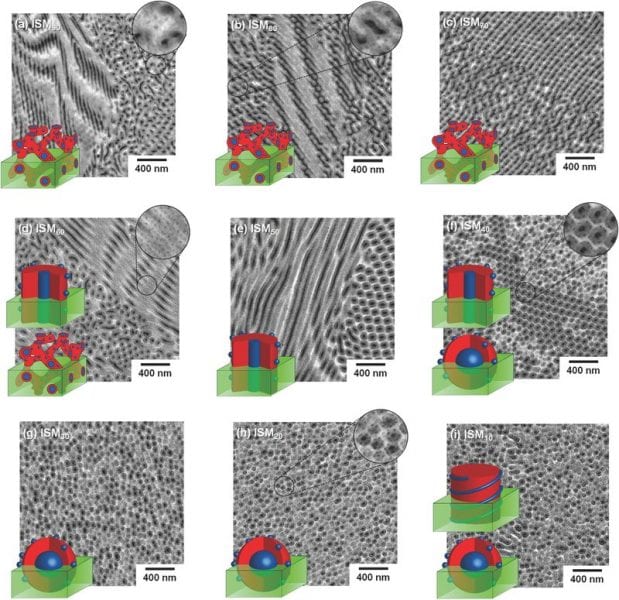Nanotechnology has gained more and more awareness as nanosized particles and materials form part of our daily life. Nanoparticles are present in cosmetic products and paints. While, nanostructured materials can be found in nanocomposites, membranes, and electronic devices. Complex nanostructures play a key role for the improvement of high-performance materials.
A suitable way to generate nanostructures is the self-assembly of molecules which spontaneously adopt ordered states without further external intervention. DNA double helix, folded proteins and cell membranes are examples of self-assembled molecules that can be found in nature.
Chemically synthesized block copolymers are perfect molecules to mimic these natural models.
Block copolymers are covalently bonded macromolecules of at least 2 chemically different polymers. If the different polymers (blocks) are immiscible, they tend to phase separate like water and oil. The bond between them prevents the components from phase separation at the macroscopic scale and microphase separation occurs.
As a result, these block copolymers develop nanostructures (mostly called “microphases”) which depend on the number of connected blocks, their length and strength of the repulsive interaction between them. Thus, tailored nanostructured morphologies composed of block copolymers can be achieved by choosing carefully their synthesis parameters. Due to the small size of the nanostructures, these morphologies can be visualized by electron microscopy.
The synthesis of block copolymers can be time consuming, especially if the number of components increases to 3 or more. As each block copolymer only leads to one microphase morphology in equilibrium, blending is an alternative route to a variety of hierarchical superstructures parting from only a few block copolymers.
In a recent work published in Macromolecular Chemistry and Physics, Prof Volker Abetz and his team demonstrate blending of block copolymers as a powerful tool to achieve complex, tailored nanostructures. They link basic current understanding of block copolymer self-assembly with advanced processing techniques.

















